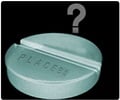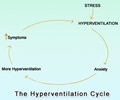
Current anti-anxiety medications work by suppressing activity in the brain circuitry that generates anxiety or increases anxiety levels. But these medications are either not effective or have side effects.
"The discovery of a novel circuit whose action is to reduce anxiety, rather than increase it, could point to an entire strategy of anti-anxiety treatment," said Karl Deisseroth.
Researchers employed a mouse model to show that stimulating activity exclusively in this circuit enhances animals' willingness to take risks, while inhibiting its activity renders them more risk-averse.
The anti-anxiety circuit is nestled within a brain structure, the amygdala, long known to be associated with fear.
The team used optogenetics, a new technology in which nerve cells in living animals are rendered photosensitive so that action in these cells can be turned on or off by different wavelengths of light.
Advertisement
By carefully positioning their light-delivery system, they were able to selectively target this projection, so that it alone was activated when light was pulsed into the mice's brains.
Advertisement
"The mice suddenly became much more comfortable in situations they would ordinarily perceive as dangerous and, therefore, be quite anxious in," said Deisseroth.
For example, rodents ordinarily try to avoid wide-open spaces such as fields, because such places leave them exposed to predators. But in a standard setup simulating both open and covered areas, the mice's willingness to explore the open areas increased profoundly as soon as light was pulsed into the novel brain circuit.
Deisseroth said he believes his team's findings in mice will apply to humans as well.
The study appears in Nature.
Source-ANI














